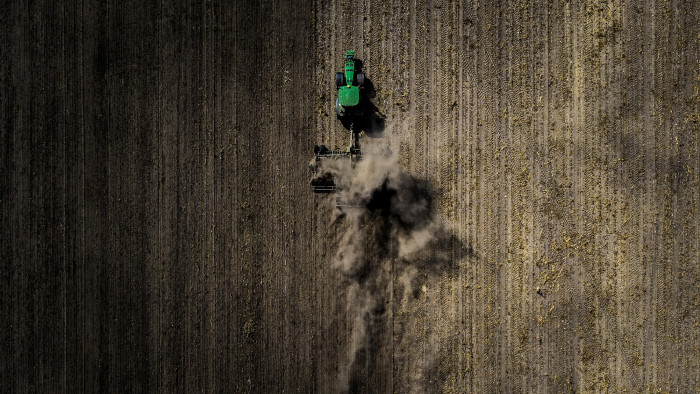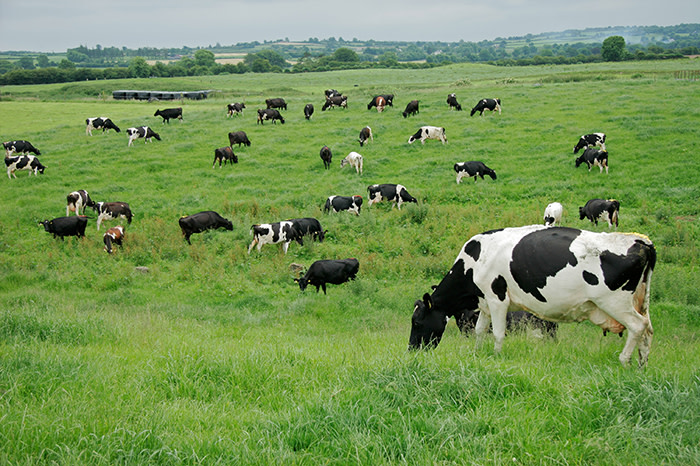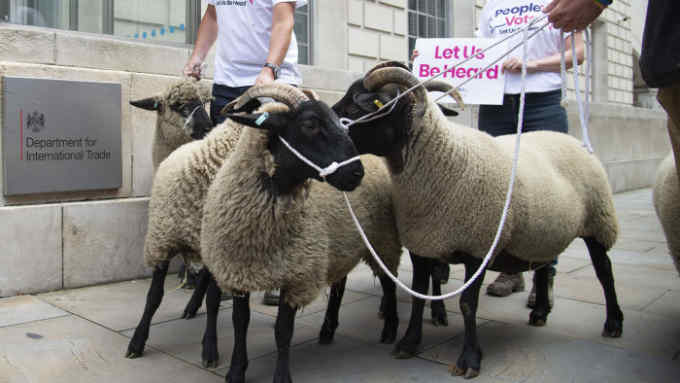Food production that does not cost the earth

Simply sign up to the Sustainability myFT Digest -- delivered directly to your inbox.
Neat Eco-Feeds has found a way to produce an environmentally friendly, high-protein feed for poultry, pigs and fish by harvesting maggots from slaughter waste.
Not only does the company, an FT Transformational Business award winner based in Ghana, produce feeds that are cheaper than conventional alternatives, it also reduces methane emissions from abattoir waste.
Solutions such as this are critical for food producers who are under pressure to tackle everything from climate change to overuse of chemicals and poor soil health. Given the scale of agriculture’s environmental impact and the complexity of its supply chains, the challenge is to ensure that sustainable food is also financially sustainable.
Striking data highlight the contribution of food supply chains to climate change. Global food systems account for between 10bn and 19bn tonnes of greenhouse gas emissions per year — more than those of China, the world’s largest emitter — according to a report from the UN Intergovernmental Panel on Climate Change.
Consumers are becoming more aware of agriculture’s environmental footprint and changing their buying habits accordingly, as seen with the growing demand for plant-based products such as non-dairy milk. The US retail market for these foods is now worth almost $4.5bn, with sales rising 31 per cent over the past two years, according to the Good Food Institute.
Technology now informs consumers about the food they buy. With the Giki app, for example, shoppers scan bar codes and are shown information about the health, sustainability, and ethics of the companies behind the products they are considering buying.
“Historically we relied on retailers or brands but consumers now understand there is technology that helps you see right through the supply chain,” says Kristina Rogers, global consumer leader at EY. “So you see an acceleration of the demand for sustainable farming.”
There is also evidence that consumers might pay more for sustainable food. Some 52 per cent of European consumers said they would be willing to pay up to 20 per cent more for sustainable food, according to research published by Corteva Agriscience and carried out by Longitude, a Financial Times company.
Yet consumers are not the only force that can, or should, shape the direction of sustainable food production. “It shouldn’t be on farmers to fix all the world’s problems, but it may be too much to ask of consumers as well,” says Richard Waite, an associate in the food programme at the World Resources Institute (WRI), a US think-tank.
Not all shoppers will pay more for sustainable products. “If people see two products side by side and one is less expensive, the incentive is to buy the less expensive product,” says Mr Waite.
Moreover, consumers can react emotionally to environmental issues and focus on some concerns over others. “All sustainability issues are not equal in the minds of consumers,” says Peter Freedman, managing director of the Consumer Goods Forum, an industry body.
“We tend to react to more visual issues,” he says. “So we are more worried about plastic waste than we are about biodiversity or climate change . . . because we see the images and that make us sit up and think.”
At the other end of the chain, investors and financial institutions are starting to support shifts to more sustainable agriculture. In 2018, for example, Triodos, an ethically focused Dutch bank, financed 86,000 acres of organic farmland across Europe.
Globally, sustainable agriculture products, including ethically labelled packaged food, are projected to grow in value from about $793bn in 2015 to more than $872bn by 2020, according to UN principles for responsible investment.
Investors are also pushing businesses to do more. “Socially responsible investors are saying that companies need to understand their impact and take ownership of it,” says Jorgette Marinez, director of consumer sectors for the US at BSR, an advisory group focused on business sustainability.
At the sharp end of the changes are farmers, for whom meeting new environmental standards can come with costs. About 70 per cent of farmers who implement three or more sustainable agricultural practices said this required higher levels of investment, according to the Corteva research.
In the long term, many sustainable farming practices may become more cost-effective, particularly as new technologies emerge.
For example, nitrification inhibitors — which slow the rate at which excess nitrogen in soil fertilisers is turned into nitrous oxide, a greenhouse gas — are also more efficient, says Timothy Searchinger, a research scholar at Princeton University and lead author of the WRI’s “Creating a Sustainable Food Future” report. This is because nitrification inhibitors prevent loss from leaching, making more of their nutrients available to the crops.
The question is how to help farmers make changes that in the short term may require additional expenditure, but that eventually will be more financially and environmentally sustainable.
Government can help by incentivising better agricultural practices and the development of technologies that make these practices more cost-effective.
“We propose a law that would require fertiliser companies to sell increasing percentages of fertiliser with these compounds in the same way we require automobile manufacturers to sell increasingly efficient cars,” says Mr Searchinger.
The advantage of such policies, says Mr Waite, is that they create demand. “If there was that market certainty, that could increase competition and innovation in the private sector to advance those technologies,” he says.
Another advocate for a market-based approach to sustainable farming is the Ecosystem Services Market Consortium, a US coalition of farmers, environmental groups, government agencies and others.
It is developing a trading system to encourage farmers to improve soil health. The coalition gives farmers technical support to improve their soil and tools to measure the changes. The improvements generate credits, which are similar to carbon credits and can be sold on the market to help farms invest further in sustainable practices. The Ecosystem Services Market is due to launch in 2022.
Under the scheme, farmers will reap the benefits of soil health — improved yields and resilience with lower input costs — and increase their competitive edge when it comes to selling to commodities buyers and food companies, many of which are working to meet their own environmental goals.
Mr Searchinger believes that market-based tools are essential to support the shift to sustainable production across the food supply chain. “If you believe in markets you have to adjust the market,” he says. “And that means somewhere along the way, people have to have a financial incentive to pollute less.”
Danone champions regenerative agriculture

Danone knows that the sustainability of its own products depends on the farms supplying it. The French food group is not only focusing on promoting sustainable agricultural practices among its suppliers, but it wants to make farming a more viable business. Its regenerative agriculture strategy has three pillars: soil health, empowering a new generation of farmers and creating conditions for inclusive growth.
The company takes a broad view of farmers’ needs. “They need viability and feasibility,” says Eric Soubeiran, Danone’s nature and water cycle vice-president and Danone ecosystem fund CEO. Danone has worked to stabilise farmers’ profit margins. It can draw up long-term contracts with farmers and use price management systems based on changes in production costs rather than the market.
This makes it easier for farmers to plan investments in sustainable agriculture and regenerative farming practices to create healthy soil that retains water and can sequester carbon. But farmers are also concerned with work-life balance, particularly in Europe. “The young generation wants to have a personal life — and that means rethinking the model of farming,” says Mr Soubeiran.
In developing countries, smallholder farmers often lack the resources to shift to more sustainable practices. For these farmers, Danone helps with access to training and equipment, as well as funding.
Mr Soubeiran stresses that for farmers to make the transition to sustainable food production, they need working capital. This means creating incentives that reward sustainable practices.
“The paradox of regenerative agriculture is that you’re asking the market to finance a temporary decrease in productivity,” he says. “So it’s very important that there is this process of monetising the externalities.”

Comments